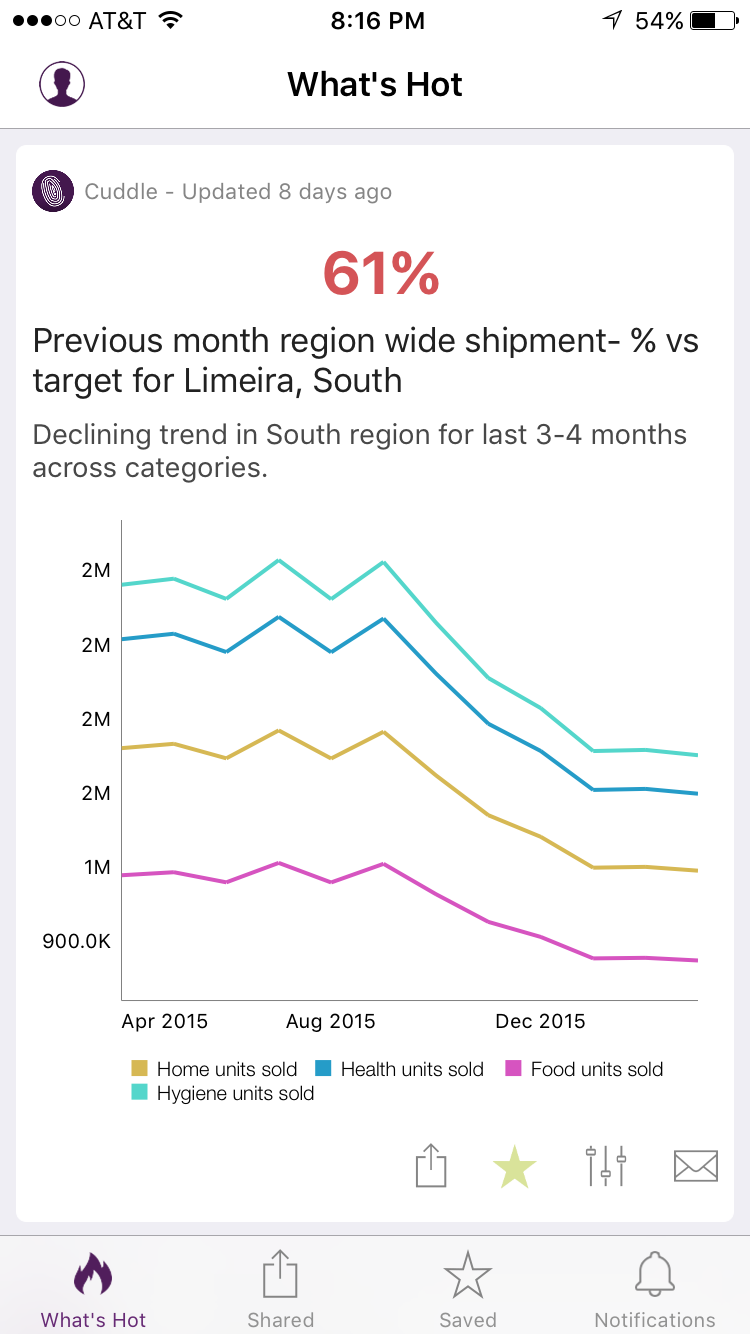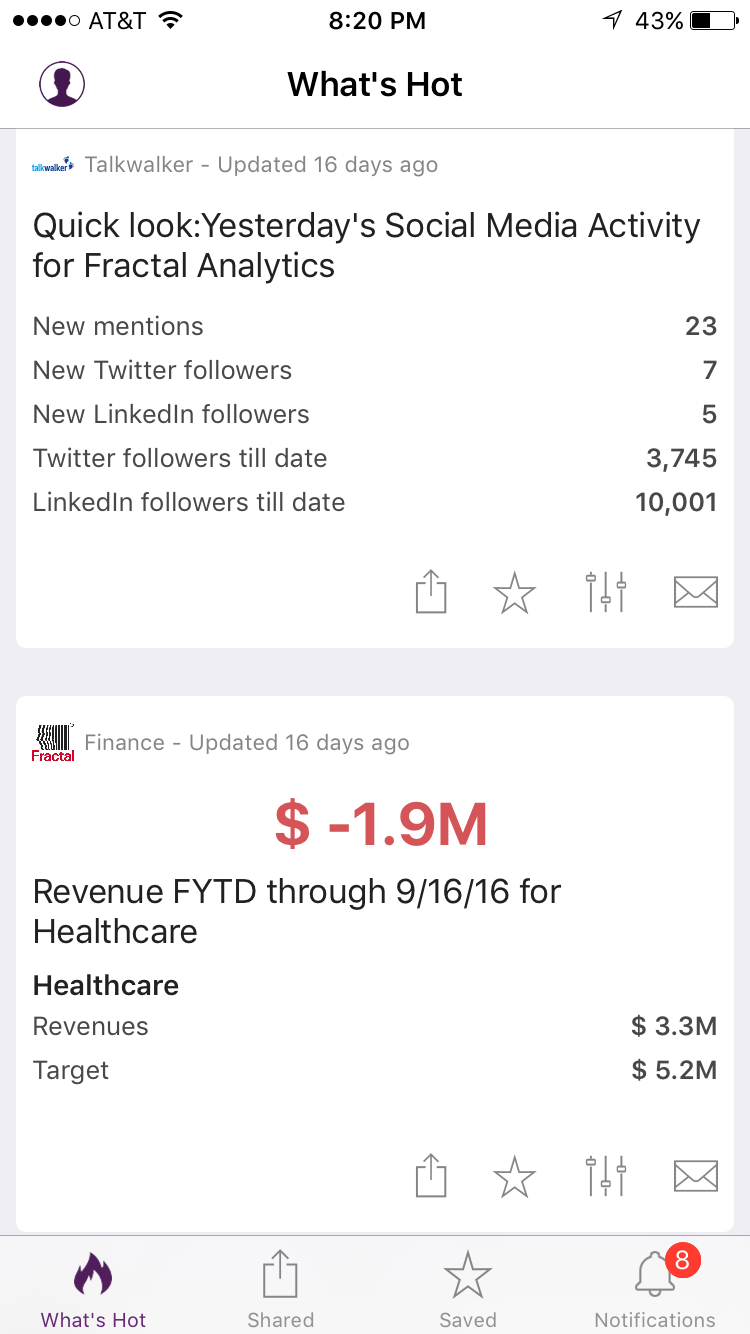Smartphone users are increasing the time spent in their mobile applications, but these apps mostly cater to the user on a personal discovery level and not for their business needs. This is why Cuddle.ai wants to make its mark in the world of business intelligence with its artificial intelligence-enabled SaaS platform, addressing the gaps of business applications along the way.
According to comScore’s 2016 Mobile App report, nearly half of smartphone users’ app time is spent in their top app, while 73% of their time is spent in their top three apps. A majority of smartphone users’ spend most of their time in personal apps like Facebook or Twitter, according to Louis Goldner, head of product development of North America at Cuddle.
(Related: Microsoft’s plans to democratize AI)
When it comes to applications that help users from a business perspective, he said smartphone users spend time in general apps like their calendar or e-mail application. This lack of personalized business applications was the main reason for starting Cuddle, was created by the global analytics company called Fractal Analytics, said Goldner.
Cuddle is an AI-based SaaS application that automatically delivers relevant business insights in the form of “bite size cards” directly to a user’s smartphone in a “hyper-personalized way,” said Goldner.
In order to turn business information into valuable insights, the “brain” of Cuddle is trained with three things: the data, the people, and the business. According to Goldner, it is a “knowledge graph,” or a system that can understand different types of information and how those variant elements are connected.
First, Cuddle is taught about data sources that are most important to the business. For example, things like shipment data, consumption data and in-house generated data are all critical to a business, and Cuddle needs to learn how to generate this information on an automated basis, said Goldner.
Then, Cuddle learns about the people in the organization, like who the users are, what their roles are, how they fit into the business, and how they all relate to one another within the organization. Cuddle also learns about the business, what it sells and whom do it sells to. In other words, what is the unique way the company goes to market?
Both structured and unstructured data is fed to Cuddle so it can begin to deliver personalized and business-related cards straight to a user’s smartphone. Once it is taught those data sources, Cuddle can continuously learn.
“As those data sources are refreshed, new information is coming in and the knowledge graph understands,” said Goldner.
The way Cuddle delivers personalized business-related cards to the user is by continuously understanding two specific pieces of information. One piece is the tracking information, which Goldner said is the kind of information that a user would want to know on an ongoing basis. The second is the discovery information, which he said is the data that helps the user uncover things about their business that they didn’t already know.
“You can automate the process of discovery,” said Goldner. “What happens is, again, the data is flowing into the system, and as that happens, Cuddle is constantly analyzing that information against a number of different dimensions, looking for patterns.”
Cuddle is constantly looking for discoveries or elements of information that it thinks the user would want to know. Since it understands the organization and its people, it can automate these bits of information in the form of business-related cards and send them directly to the user via a smartphone application.
Once a user receives a card of information, be it discovery or tracking, it’s up to them to teach Cuddle what insights work for them and what doesn’t. With every card of information, users are able to thumbs-up or thumbs-down the card. This way, Cuddle can understand what information is most critical to the business user.
Additionally, Cuddle brings in natural language processing capabilities to take a third-party news feed and break it down to understand what elements are most important to the organization. Again, said Goldner, the user can teach the system what bits of news are most important to the business and the user, like stock market information or global breaking news.
Not just for the enterprise
While Cuddle is designed to be an enterprise tool, it’s not just the big companies that can use the business sidekick. Since it’s a SaaS platform, there is relatively no work involved for the user, said Goldner. And the main goal of Cuddle is to give business users who use multiple data services on a daily basis the most important pieces of information.
Right now, Cuddle is continuously working with different data partners so it can integrate multiple data sources for the business user. When a customer wants to use data from something like Salesforce, Cuddle’s system has already run analytics on that third party’s data, making it available to the user.
“We are not selling data, and we don’t manufacture data,” said Goldner. “We are just trying to use it to produce better information at a personalized level for people [because] there is this shift from an enterprise-centric view of analytics to a user-centric view.”








